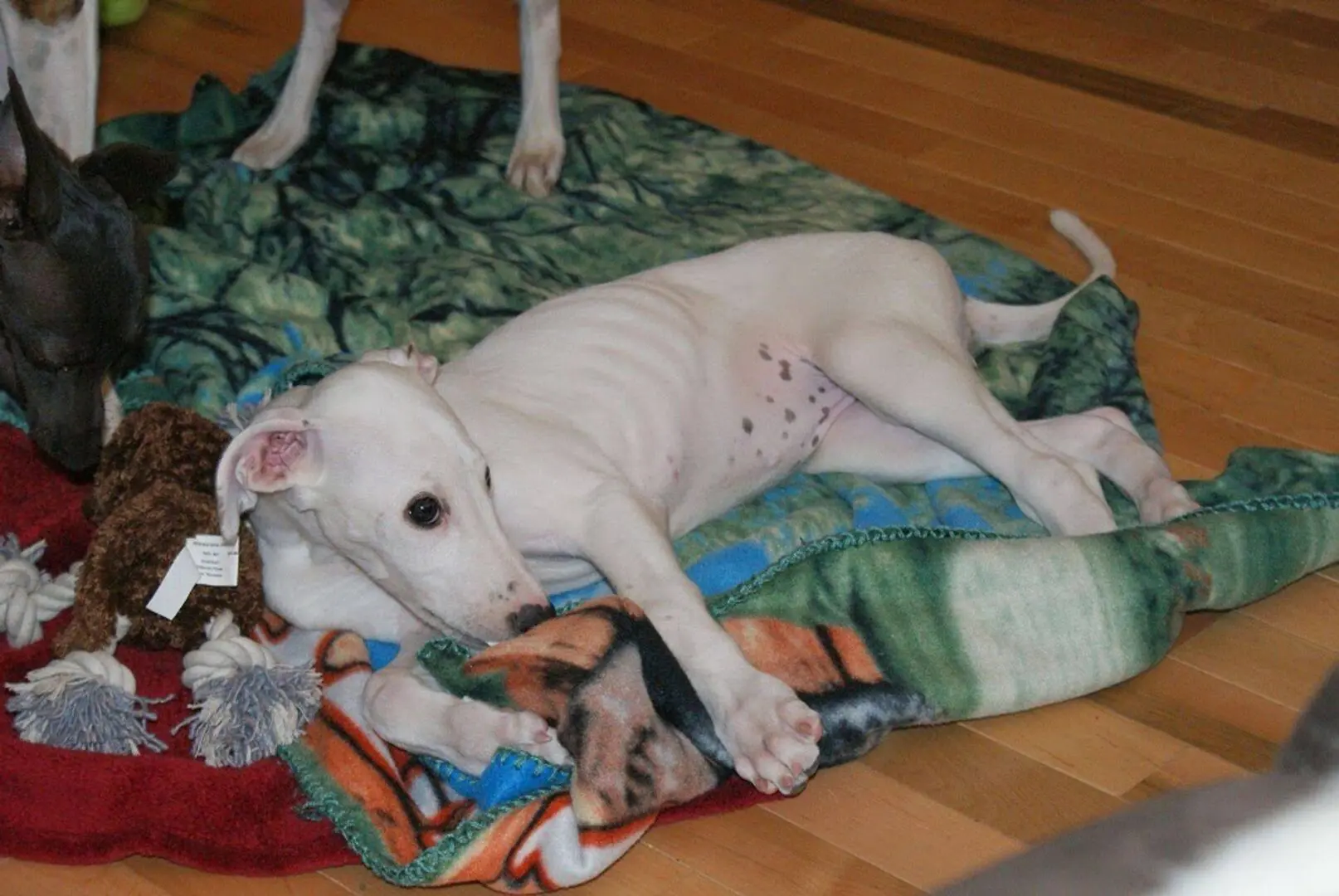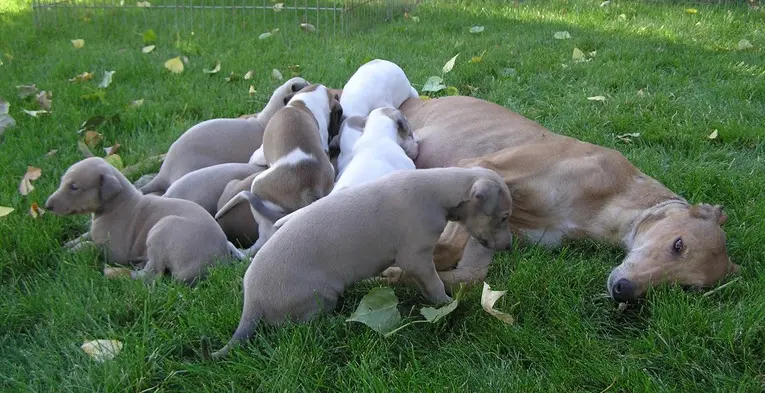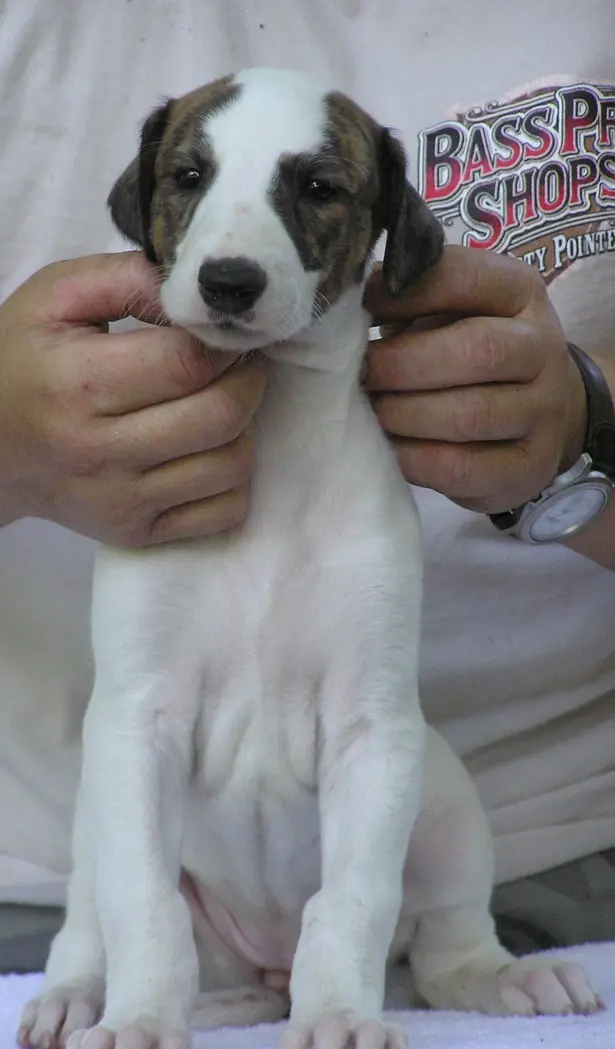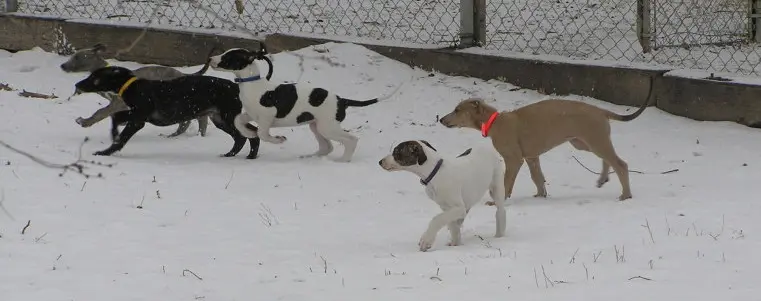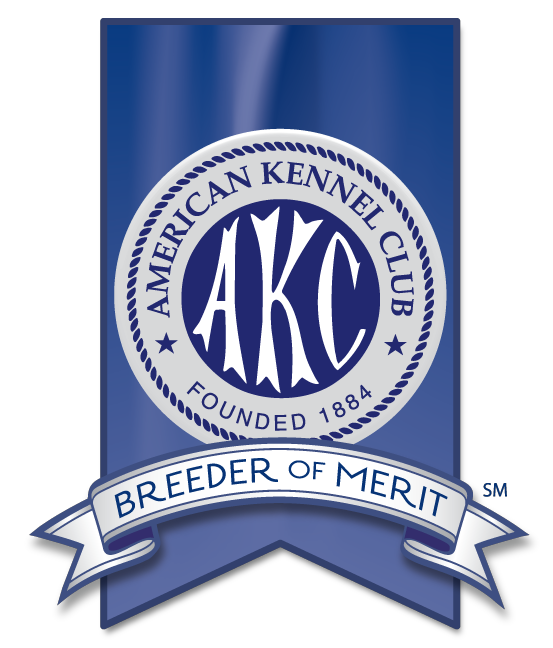
WINDROCK LLC
Recognized by the AKC as a
PLATINUM LEVEL BREEDERS OF MERIT
The ONLY Greyhound breeders so recognized by the AKC

Our Philosophy
A work in progress! What is here is rambling of sorts`I will finish when time permits!
Our philosophy regarding the greyhound is that the breed was originally developed hundreds of years ago as a hunting dog that ran down prey for his owners. So deeply ingrained in the breed is this instinctual desire to chase moving things, that even today greyhound owners must remain vigilant for the safety of their hounds anytime the dogs are off leash. To deny a Greyhound the opportunity to run is like imprisoning an eagle in a birdcage.
We feel a common kinship with people that share their lives with the greyhound. The couch potato, the show dog, the coursing dog, the racer, are all EQUAL in our eyes. What matters most to us is that greyhounds have finally earned the their rightful place as a companion second to none. Those of us who dare to the don mantel of Breeder are taking on awesome responsibility--the creation of Life is not unlike the opening of Pandora's Box. Breeding healthy dogs that are a credit to the breed isn't as easy as it might sound. It is a difficult task at best, to produce animals that above all other considerations, are healthy and long lived. Breeders MUST use all available resources to ensure the dogs they breed will contribute in a way that is not detrimental.
We have all seen the beautiful dogs and beautiful people showing dogs on TV. While these televised events are flashy,fun and entertaining one should put all things in proper perspective. A breeder should never be so consumed in his/her quest to win ribbons that they forsake the qualities that make a Springer a masterful hunter and digress him into little more than a heavily coated trotting machine racing madly around at the end of a lead. A Springer is not a Springer if he has improper coat, poor feet, atypical structure that limits his endurance, and is not enthralled by the scent of a pheasant.
So be it with the Greyhound. Can you imagine a Greyhound of such poor conformation that he can not run? Sad to say, I have seen such creatures and they were the sad result of "breeding for show." Conversely, I have seen track specimens whose appearance did not even remotely resemble a Greyhound
Today's Greyhound is plagued by the existence of firmly divided camps. There are those who consider the track greyhound as vermin and claim that they are no longer "true greyhounds". These people embrace the bloodlines and appearance of Greyhounds as those usually registered by the AKC. Many of the show breeders only breed only for appearance and for show ring accolades. On the other side of the fence are those die hard advocates of performance dogs who breed only for speed or perceived ability.
I view this division as pure nonsense. I ask myself, is it not possible to have it all?
As a youth, some of the best advice I ever got about animal husbandry came from an old Wyoming cowboy who had earned his PhD the hard way (Post Hole Digger). I was considering breeding my talented, but temperamental Quarter Horse mare. He looked me in the eye and said, "Sis, ,would you take 10 more just like her?" Stunned at first, after a moments reflection, I had to shake my head no. My mare was lightning fast, well conformed and ,I'd won a lot of roping jackpots off of her. But it took a hand to lead her to water. No, as lovely as she was, she was a pain in the a--to live with. She did not have the proper temperament to be a good mama to a foal.
My friend adjusted his hat, smiled and remarked, "Congrads kid, you just might have the making of a horseman.". He knew how highly I thought of that horse yet he knew all along what I had finally come to realize, that she was not a proper mare to breed. At that moment, the seeds of the ability to objectively evaluate breeding stock were sown in my mind .
While a sire and dam may contribute equally 50-50 in genetic material, many savvy horsemen are of the opinion that the mare, or dam gives more (75%) in that the foal models her behavior. If mom is a cantankerous old rip, think of what the kid has got for a role model. What she is, he becomes. This premise is true with many of God's creatures.
The best pups we have ever raised were birthed and raised by a loving dam who was given the time and freedom to teach her young brood all things dogs should know. Respect for your elders. How to play nice. How to properly clean yourself. How to hunt the mice that live in the hay.
Those kind of Mammas are following in the footsteps of their own good upbringing. They teach what they have themselves been taught.
As Greyhound breeders, we do not breed just for appearance or physical beauty as do many of the show dog ilk, nor do we breed strictly for ability. We embrace the concept of looking at the Big Picture, the consideration of all factors. Our mission statement at WINDROCK is first and foremost, the Greyhound must first be a Companion. A companion is a dog of such even temperament that he can easily accept people from all walks of life and adjust to most situations. His intelligence and calm demeanor gives him the innate ability to do so. An ideal companion must be healthy and long lived . A Breeder has failed miserably if the dog is plagued throughout its life with health problems and is cursed with a foreshortened lifespan. This is where conformation or a Greyhounds physical characteristics are so very important.
But breeding for appearance only is a road to ruin. What "looks" good isn't necessarily so. Proven performance is the ONLY true measure of ability. I once showed a beautiful Quarter Horse mare to many Grand Champion wins. My, she was a pretty thing to look at. But you couldn't ride her. Her conformation was such that she was unsound and couldn't be ridden. But she won a lot of big ribbons and fancy awards. Now, I ask you, what good is a horse if you can't ride it?
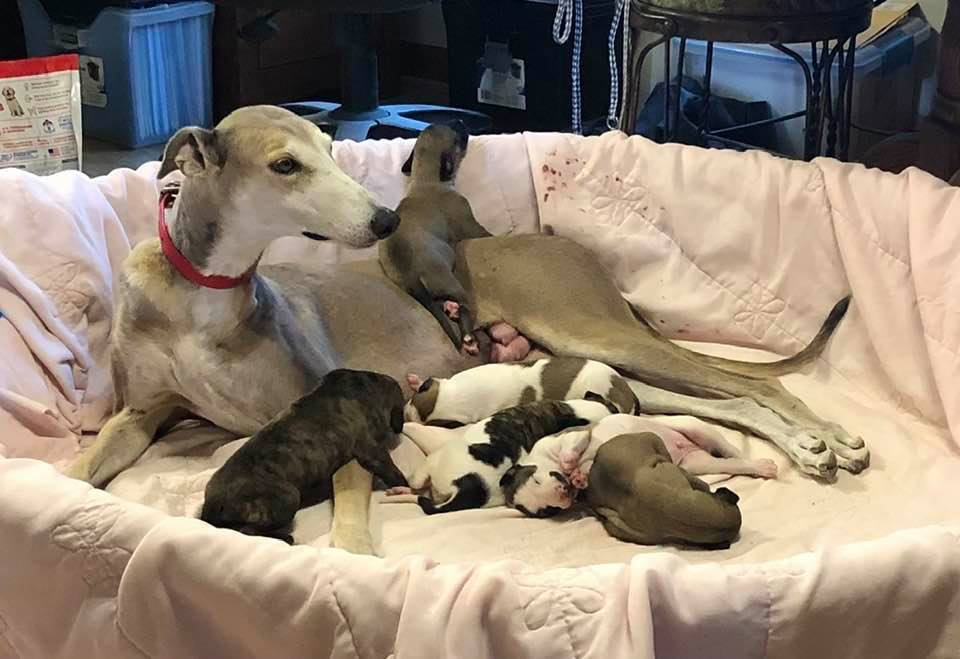
One of the best ways to avoid using affected animals in a breeding program is through using available health tests.
The Greyhound breed DOES have medical concerns, some conditions that only can be diagnosed by a educated individual. Some of the Medical disorders affecting the greyhound may be assessed through this link: http://www.upper.ca/cidd/intro.htm
Very few greyhound breeders incorporate even the rudimentary basic health tests of OFA (hips/elbows) or CERF (disorders of the eyes). In fact, there are less than 600 greyhounds listed in the OFA database, which is appalling when one takes into account that OFA has been recording records since 1966. OFA records indicate that Greyhounds have a very low incidence of HD, but that they suffer from a variety of inherited ills.
Anomalies are popping up. Helen Hamilton DVM, published her findings of causes of deaths of GCA (Greyhound Club Of America) members dogs from 2000-2008. Cancer was the leading cause of death, followed closely by GDV. Other conditions, previously not noted (or were breeders hush-hushing?) are now being reported with alarming frequency. Heart problems are popping up, along with a new scourge, neuropathy.
Track or NGA bred greyhounds are prone to developing bone cancer. Curiously GDV is not a major concern in the NGA or race bred Greyhound, but has been noted the last 5 years with increasing frequency. A major concern affecting all greyhounds are inherited eye problems, some of which can render an affected dog totally blind at a relatively young age.
Prospective puppy buyers of ANY breed should purchase from breeders who thoroughly screen breeding stock for health concerns. Demand to see proof of health screening. Many results can be viewed on line. OFA findings are but one of many. Copies of documentation should be provided upon request.
Bringing Up Baby(ies)!
WINDROCK's approach to puppy rearing is very simple; give the Mom-to-be the best nutrition and make sure she is in hard, fit condition. Mom enjoys stimulating exercise right up to the day she whelps.
A strong, healthy bitch has a much better chance of an quick and easy delivery with fewer problems. A bitch in good condition will produce a healthier litter and be more content with her litter when they are born.
When whelping is imminent, the expectant Mom is given a very soft bed in anticipation of the blessed event-- but we have found that often the puppies come on our king-sized bed!! Our Girls *love* OUR bed and are very content to whelp their family there--but we move them into the living room for the next 5 weeks. Our residence has treated hardwood floors, a real blessing! Kim sleeps on the couch next to the pups to make sure nobody gets accidentally squished. This is a real danger with some greyhound mothers. Fortunately, most our moms are mindful of their feet and dote on their brood, especially for the first few days. Mom is allowed to come and go as she wishes.
Our mothers know when they are ready to wean their brood. We do not force wean and are of the opinion that it is cruel. Of course, there are exceptions, and if a mother is poor caretaker, she will need help with the litter and will not be allowed to have pups again. Most bitches are fine mothers, but some are not. The puppies begin consuming solid food when they seem interested in eating which for us is around 2-3 weeks. We like to start them on goat's milk and hamburger, and soaked kibble. Generally speaking, most of our moms continue to nurse their kids until about 8 weeks. Some mothers tire of them and the sharp little teeth much sooner!
At approximately 6 weeks of age, Mom and puppies are moved to the kennel building which is equipped with a dog door to the outside puppy paddock. House training is quick and easy as the pups start going outside at 5-6 weeks and only need the newspaper at about the 4 to 5 week stage. When they willingly go outside to relieve themselves, the newspaper and mess magically disappears . . . Hooray!!
At 8-9 weeks we do crate training and travel training - all on the same day! We take two pups at a time in a crate in our van. Off we go on a nice little drive with the music cranked up to drown out the puppy wailing! We run errands, that way they get to experience the car stopping and starting, different noises, people, other vehicles and even a trip to a friends house for some socializing.
We also take the pups from 9 weeks on trips to visit with other people, kids and other dogs. If possible, we will have them out in an x-pens together at dog events and encourage people to play with them. We bribe all the kids to get into the pen with the pups and play with them. There is no substitute for kid and puppy socialization. Its a win/win situation any way you look at it.
As soon as they are physically able, the youngsters start going for walks around our farm with Mom. For the first time out in the large pasture, they don't go far and don't stay out for too long--and I am always in attendance supervising activities. By 11 weeks, they are quite bravely wandering around our acreage. Soon they are romping over the property, investigating the creek, gawking at the livestock, and playing chase games. Because of the freedom and exercise they receive, the puppies eat well, sleep soundly at night and develop strong muscles and bones.
Socializing begins very young with the pups being raised up underfoot in our house. They are not kenneled or crated and are only placed into an x-pen connected to a crate at nighttime to sleep. The rest of the time, they are in and out of the house, out in the enclosed patio, or out playing. Outdoors play is essential to proper growth and development. Pups who remain with us continue to receive daily runs on our property as well as full house and yard privileges. We will take them to lure courses and other like social gatherings. We DO NOT take our brood to Dog Parks! The risk of injury by other dogs is too great to say nothing of the likelihood of picking up parasites or contacting disease.
At no time is exercise is forced and the puppies are able to run as little or as much as they wish in one of the large runs. We do not limit them and find they are more easily house trained and socialized if allowed to mix with trustworthy adults with supervision. Plus, they are TIRED when they come in a night. A Good puppy is a TIRED puppy!
By time our pups are 10-12 weeks of age, they are ready for their new homes. They are leash broken, crate trained, house trained and have been well socialized with kids, the outdoors and on several public excursions.
They have been given the best possible start in Life. But it is only a Start. The rest is up to YOU as Pup's new boss! Puppy Kindergarten classes and obedience classes are highly recommended.
Ask About Available WINDROCK LLC greyhounds
If you are interested in acquiring a WINDROCK LLC Greyhound, feel free to get in touch with us. We can also refer you to other reputable breeders.
